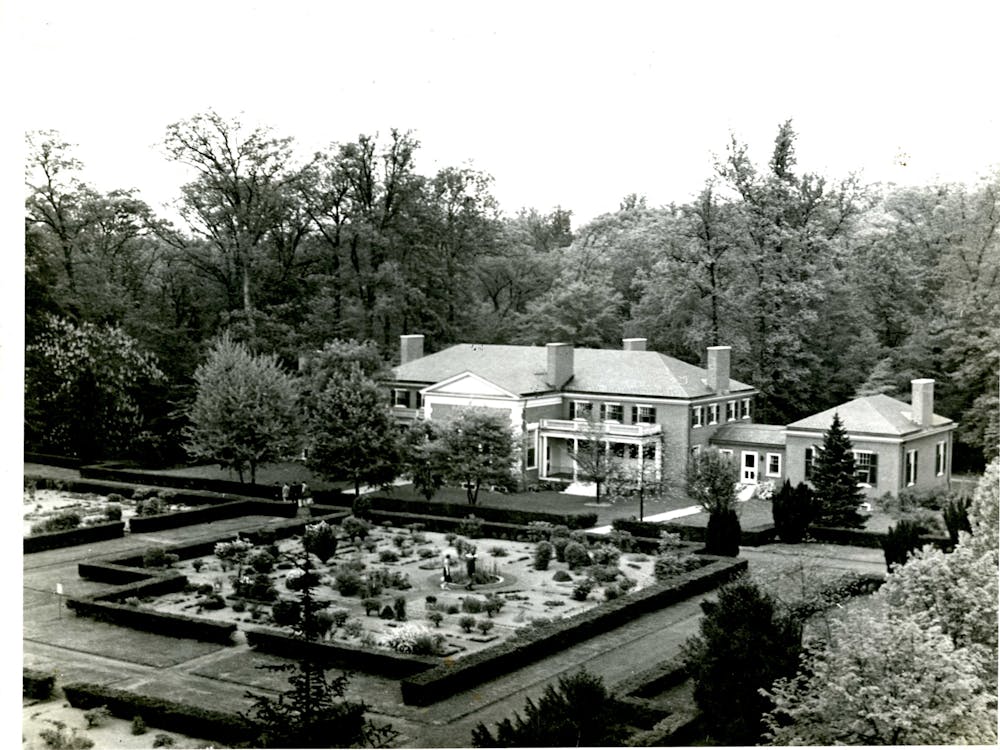As part of Black History Month, the Homewood Museum invited Dion Banks and Kisha Petticolas, co-founders of the community organization Eastern Shore Network for Change (ESNC), to give a talk, “Reflections on Pine: The Movement Continues” on Saturday.
In their talk, Banks and Petticolas discussed the 1967 Pine Rebellion in Cambridge, Md. and explored its legacy today. The rebellion, which stemmed from tensions over racial segregation, had resulted in the burning of the predominantly African-American Pine Street, destroying many of the businesses there.
Banks and Petticolas met in 2012 while managing a local campaign to create environments in which residents of Cambridge could come together and find common ground to talk about issues.
They began the talk by explaining relevant historical events during the mid-20th century. At this time, the Phillips Packing Company, an industrial manufacturer, was the economic center of Cambridge. According to Dion, the company employed over 10,000 people at its peak.
The company provided stable work to Cambridge residents, resulting in two segregated but self-sustaining communities: Pine Street, a predominantly African-American neighborhood, and Race Street, the town’s main commercial street located one block away from Pine Street.
Banks noted that Pine Street was home to many small businesses, churches and schools.
“You could do everything on Pine Street,” Banks said. “It was like New York.”
However, the company began to falter, partially due to the loss of lucrative government contracts. In response, the company began to downsize and lay off workers. Unrest within the town increased as more and more black jobs were lost.
“There became a movement to protect white jobs over black jobs,” Banks said.
Around this time, Gloria Richardson, an educated social worker who was unable to find work in Cambridge, collaborated with the Student Nonviolent Coordinating Committee (SNCC) to create the Cambridge Nonviolent Action Committee.
“From 1960 to 1964 she changed the landscape of civil rights politics in Cambridge,” Banks said.
Richardson’s achievements include getting the peace treaty of Cambridge signed by John F. Kennedy and being one of a few women asked to speak at the 1963 March on Washington in Washington, D.C.
Banks and Petticolas explained that although people tend to merge Cambridge’s movement with the national civil rights movement, there are vital differences between the two.
“Where Martin [Luther King Jr.] was talking about public accommodations, sitting at the same lunch counter, being able to vote... we had been voting for years in Cambridge. Our issues were housing, education and healthcare,” Petticolas said.
Some believe that Cambridge residents set Pine Street on fire in response to a speech by H. Rap Brown, the chairman of SNCC, about the government’s nonchalance in the face of overwhelming poverty.
However, Petticolas said that Richardson offered a different explanation.
Richardson told Petticolas and Banks that an owner of a local hotel with the surname Green started the fire.
He thought that if he burned down the abandoned school on Pine Street he could buy the property cheaply and use the land to expand his hotel.
However, the fire spread to almost all the businesses in the area, including his own, and firemen refused to help quell the flames. Three years later, Mr. Green committed suicide.
In 2012, Banks and Petticolas had a community conversation in Bethel church, a community center, where they asked a panel of people to share their stories and memories of the rebellion.
However as the conversation began, they began to feel anger and tension in the room.
“During that time we realized that this was the very first public conversation about what had happened at that time,” Petticolas said. “The story about the purposeful setting of the fire and why it happened had not come to light... there are people who believe white people came and burned down our neighborhood, and there are people who believe black people burned their own neighborhood.”
This discourse inspired Banks and Petticolas to call upon many stakeholders in the community.
They contacted people in the police department, county tourism, community radio, the art center, clergy, educators, the chamber of commerce, county officials and the mayor.
Together they created a four day program, “Reflections on Pine,” which aimed to reclaim the narrative around the fire and to have frank conversations about its lasting legacy, that lasted from July 20-23.
The event included an exhibit, a music festival, a unity walk around Pine and Race Street and the unveiling of a mural celebrating the history of influential black people in the town.
This year, Banks and Petticolas hope to hold “Reflections on Pine” again but on a smaller scale.
They look forward to commemorating more of their heritage and to seeing what the power of reclaiming narrative does for the citizens of Cambridge.
“There is a certain pride that comes with reclaiming your story,” Petticolas said. “You stand a little taller when you’re able to tell your own story and people actually listen.”























Please note All comments are eligible for publication in The News-Letter.